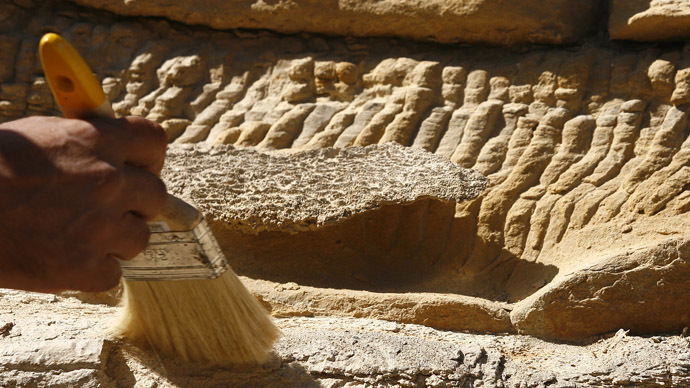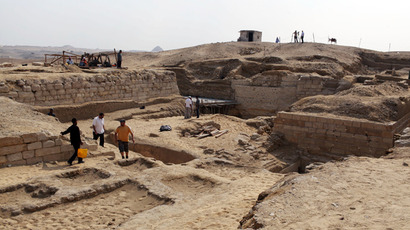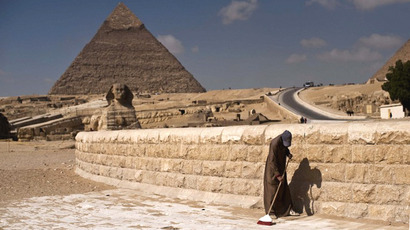Older than oldest of 7 Wonders: 4,600 yo step pyramid uncovered in Egypt

A step pyramid, a few decades older than the Great Pyramid of Giza (the oldest of the Seven Wonders of the Ancient World), has been uncovered by archaeologists in southern Egypt.
Although scientists were aware of the pyramid’s existence, it
remained buried under a thick layer of sand until a group of
archaeologists started excavation works in 2010, according to a
report by LiveScience.
The group, led by Gregory Marouard, a research associate at the
University of Chicago's Oriental Institute, has recently
presented the initial results of its activity at a symposium by
the Society for the Study of Egyptian Antiquities, held in
Toronto.
The step pyramid, which when built around 4,600 years ago was 13
meters (43 feet) high, has by now become about one third that, as
the blocks it was constructed with have been pillaged throughout
its centuries-long existence.
It is one of seven so-called "provincial" pyramids built across
central and southern Egypt by either the Pharaoh Huni (reign c.
2635-2610 BC) or Snefru (reign c. 2610-2590 BC). Those do not
have internal chambers and were not intended for burial. In fact
the purpose of the constructions remains a mystery. The most
likely explanation so far is that they were used as symbolic
monuments scattered over Egypt as confirmation of the pharaohs’
divine powers.
4,600-Year-Old Step Pyramid Uncovered in Egypt http://t.co/H0wSG0NMU9pic.twitter.com/GRxF5EIfsJ
— LiveScience (@LiveScience) February 3, 2014
"The construction itself reflects a certain care and a real
expertise in the mastery of stone construction, especially for
the adjustment of the most important blocks," said Marouard
as cited by LiveScience.
A possible clue to the purpose of the building could be the
remains of an installation where food offerings appear to have
been made, found by the team of archaeologists.
There’s also hieroglyphic graffiti discovered on the pyramid’s
walls. The images include those of a book roll, a seated man, a
four-legged animal, a reed leaf and a bird.
"These are mostly private and rough inscriptions, and
certainly dedicated to child burials located right under these
inscriptions at the foot of the pyramid," Marouard
explained.
The researchers believe the inscriptions and burials date long
after the pyramid was built and have little to do with its
original purpose, to which according to scientists the
construction served for less than 50 years.
The pyramid was supposedly abandoned about the same time the
building of the Great Pyramid of Giza started under Pharaoh
Khufu. A hypothesis holds it that the creation of one of the
ancient wonders led to all of the country’s resources being
poured into the big project, while smaller pyramids were left
neglected.














